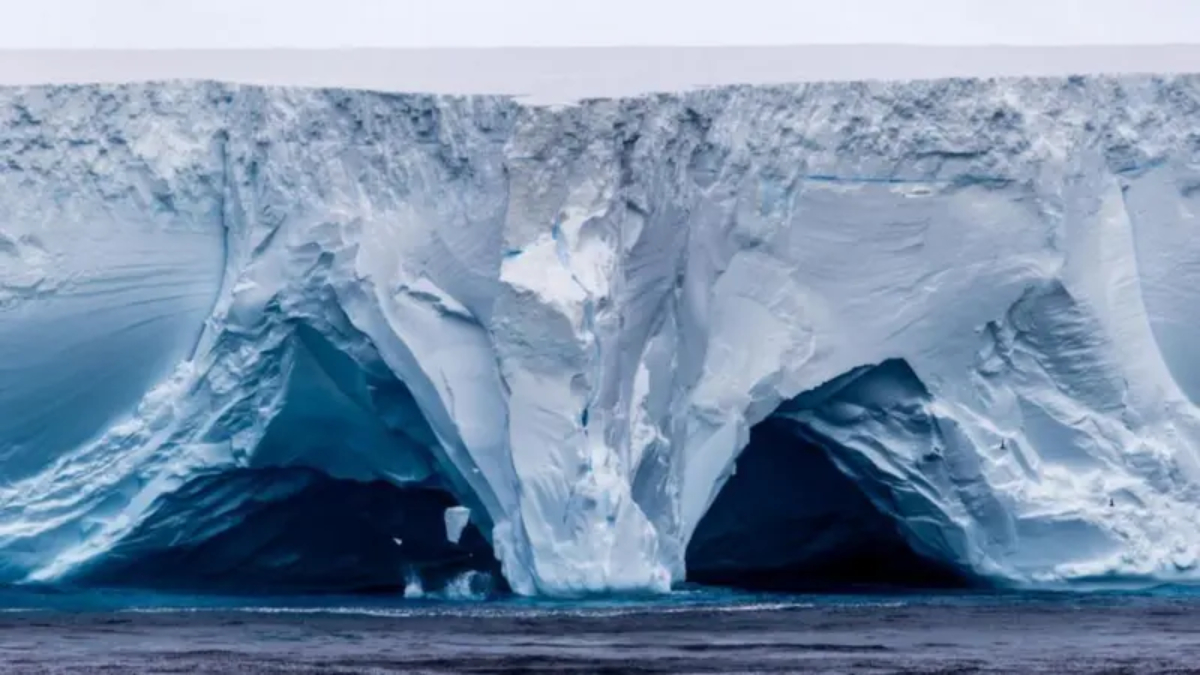The World’s Largest Antarctic Iceberg: A23a’s Collision Course with South Georgia Island
In the vast expanse of the Southern Ocean, an enormous iceberg, designated A23a, has captured the attention of scientists and environmentalists alike. This colossal iceberg, one of the largest ever recorded, is currently on a potential collision path with South Georgia Island, a remote territory known for its rich biodiversity and significant ecological value. As the iceberg drifts through the icy waters, concerns mount regarding the environmental impacts and navigation hazards it may pose. Experts are closely monitoring this unprecedented event, which has implications far beyond the immediate vicinity of the iceberg.
Understanding Iceberg A23a
A23a is part of a larger iceberg calved from the Filchner Ice Shelf in Antarctica. Measuring approximately 150 kilometers long and 30 kilometers wide, it is one of the largest icebergs in recent history. The iceberg broke away from the ice shelf in 2021 and has been steadily drifting northward ever since. Its journey has been tracked by satellite imagery and oceanographic surveys, providing valuable data on its movement and the potential impacts of climate change on polar ice systems.
The sheer size of A23a is staggering. To put it in perspective, it covers an area larger than the state of Luxembourg. As it moves, it poses various threats, including the potential disruption of marine ecosystems and navigation routes for ships traversing these waters.
Potential Collision with South Georgia Island
South Georgia Island, located about 1,400 kilometers east of the Falkland Islands, is renowned for its unique wildlife and pristine landscapes. The island serves as a breeding ground for various species, including seals and penguins, which rely on the surrounding waters for food and habitat. The potential collision with A23a raises questions about the iceberg’s impact on these species and the broader ecosystem.
As the iceberg approaches South Georgia, scientists are particularly concerned about:
- Environmental Disruption: The collision of A23a with the island could lead to significant environmental changes. The massive influx of freshwater from the melting iceberg may alter salinity levels in the surrounding waters, affecting marine life.
- Habitat Destruction: The sheer force of an iceberg colliding with land could destroy coastal habitats critical for breeding and feeding.
- Navigation Hazards: The presence of A23a poses a potential threat to maritime navigation routes, especially for fishing vessels and research ships operating in the region.
Monitoring A23a’s Movement
Experts from various research institutions and organizations are actively monitoring the movement of A23a. Satellite technology, including synthetic aperture radar and optical imagery, is employed to track the iceberg’s drift and predict its trajectory. This data is crucial for understanding not only A23a’s potential impact but also the broader implications for global sea-level rise and climate change.
Additionally, oceanographic buoys have been deployed in the region to collect data on water temperature, salinity, and currents. This information helps researchers model the iceberg’s behavior and assess the risks it poses to South Georgia and beyond.
Climate Change and Iceberg Dynamics
The emergence of A23a and its journey toward South Georgia Island is emblematic of broader changes occurring in the polar regions due to climate change. The warming of the planet has resulted in increased calving events from ice shelves, leading to the formation of large icebergs like A23a. The melting of these ice masses contributes to rising sea levels, which poses a significant threat to coastal communities around the world.
As temperatures continue to rise, the dynamics of the Antarctic ice sheets are shifting, leading to more frequent and larger calving events. This phenomenon not only affects the local environment but also has far-reaching implications for global climate patterns.
What Lies Ahead for A23a and South Georgia
The trajectory of A23a remains uncertain. While current predictions suggest that the iceberg may pass near or even collide with South Georgia Island, the exact outcome is still being studied. Scientists are considering various scenarios, including:
- Direct Collision: If A23a makes contact with the island, the immediate effects could be severe, leading to habitat destruction and changes in local ecosystems.
- Close Pass: A close encounter may still result in significant changes to the surrounding marine environment, particularly due to the influx of freshwater.
- Drift Away: There’s always the possibility that A23a could drift away harmlessly, depending on ocean currents and wind patterns.
Regardless of the outcome, the situation underscores the importance of continued research and monitoring. Understanding the behavior of such icebergs is vital for predicting future events and mitigating potential risks.
Global Implications and Future Research
The case of A23a serves as a reminder of the interconnectedness of our planet’s systems. Changes in one part of the world can have rippling effects across the globe. As scientists continue to investigate the impacts of icebergs on marine ecosystems, there are several key areas of focus:
- Marine Biodiversity: Understanding how icebergs influence marine habitats and species is crucial for conservation efforts.
- Climate Models: Incorporating data from iceberg movements can improve climate models and predictions regarding sea-level rise.
- Policy Development: Insights gained from monitoring A23a can inform policymakers about the need for protective measures in vulnerable regions.
Conclusion
A23a’s journey toward South Georgia Island is a captivating yet concerning event that highlights the challenges posed by climate change and its effects on polar regions. As experts monitor this enormous iceberg, the focus remains on understanding its potential impacts and the broader implications for our planet. By fostering awareness and promoting research, we can better prepare for the changes that lie ahead and work towards safeguarding our precious ecosystems.
See more Your Daily Weather



